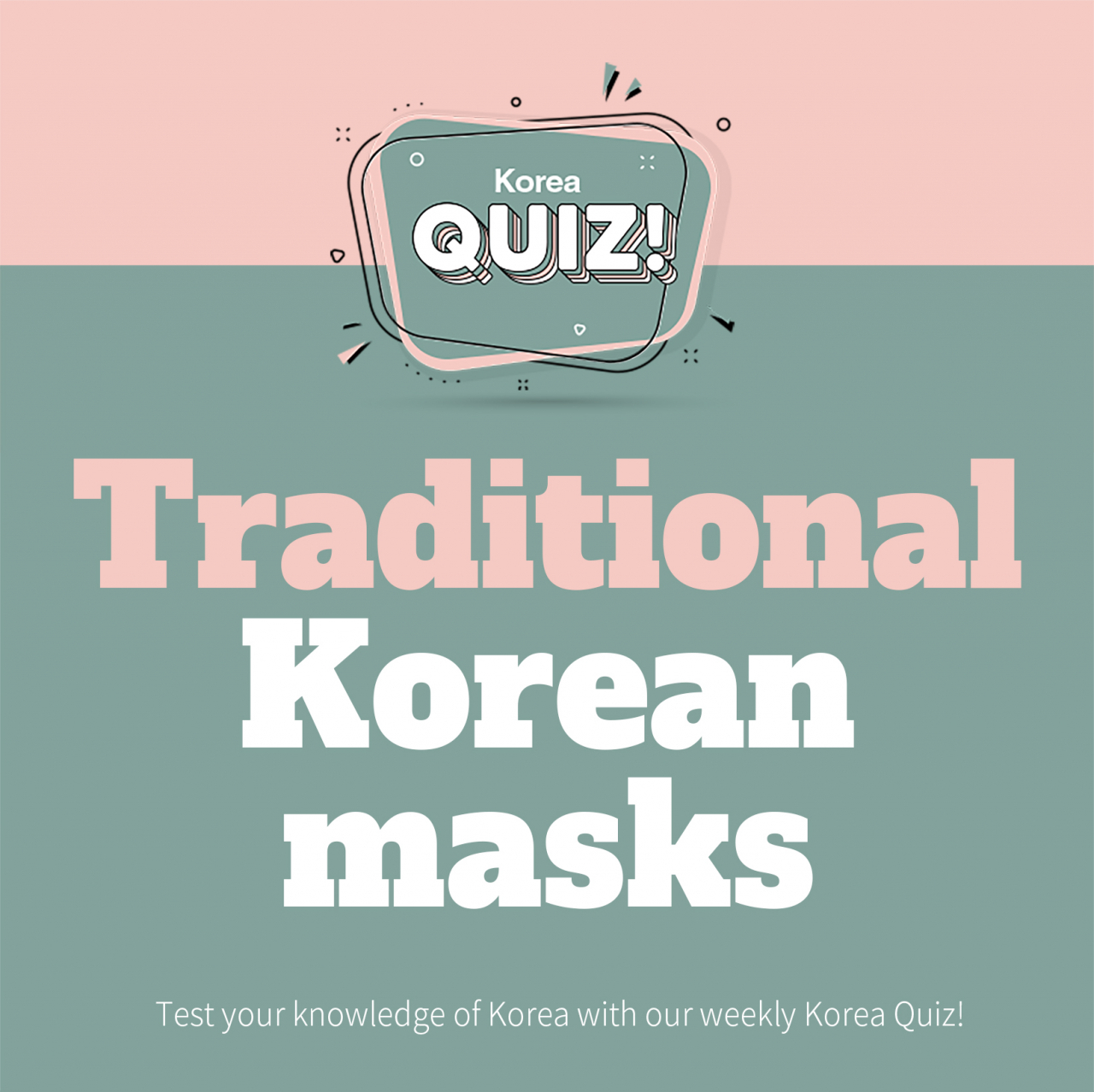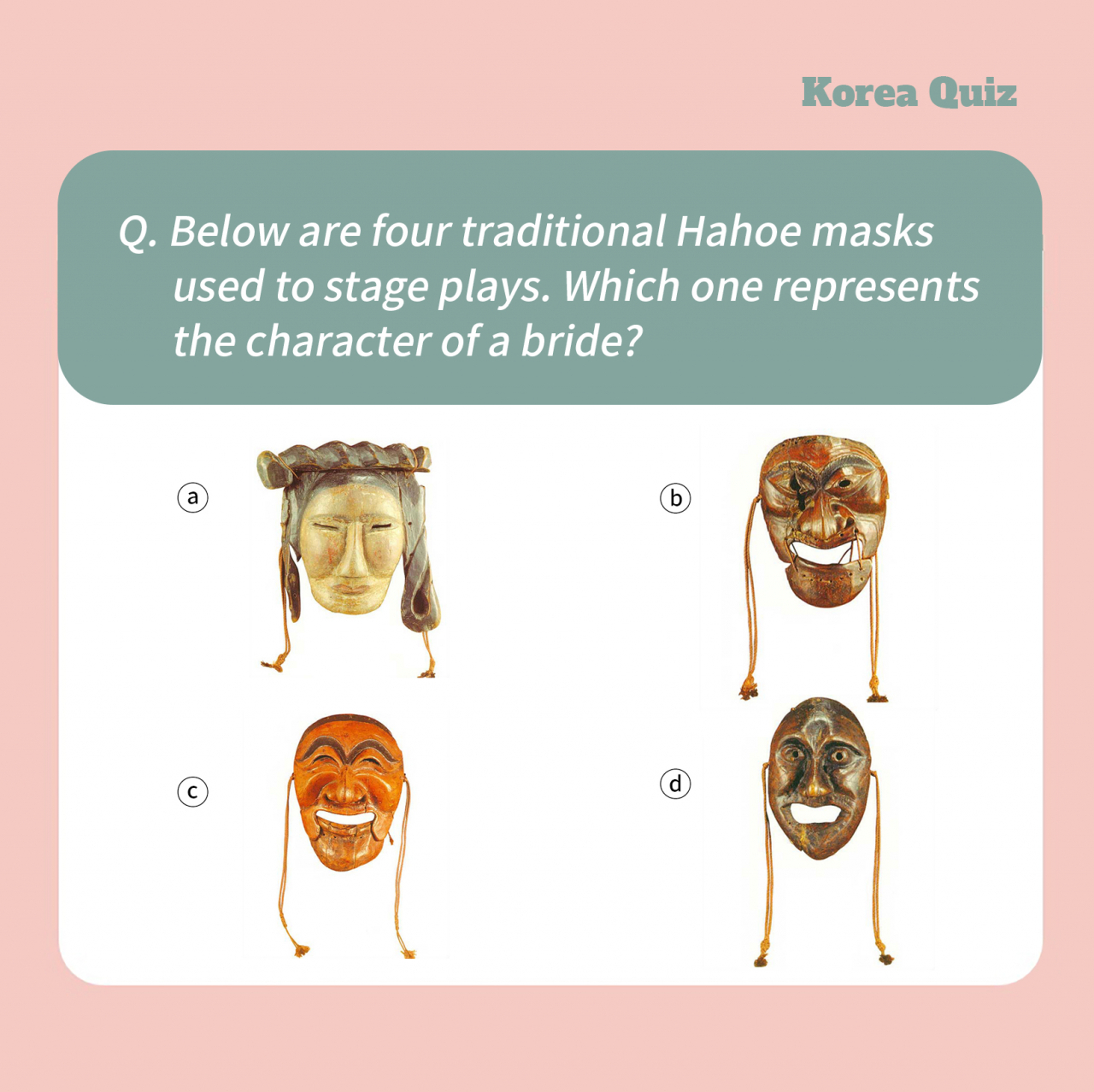

Find the answer at the bottom.
Hahoe is a traditional clan-based village in Andong, North Gyeongsang Province, known for having the oldest surviving masks for mask dance dramas in South Korea.
Eleven Hahoe masks have been passed down, representing different characters in a stage play, including a lion, a bride, a monk, a noble and a scholar.
Traditionally, such masks were made from gourds or paper and burned at the end of the performance. However, Hahoe masks were crafted from wood and preserved.
The origins of these masks and their creators are unclear, but they are believed to have been made during the late Goryeo Dynasty (918-1392).
Now housed in the Andong Folk Museum, they are S. Korean national treasures No. 121, along with two masks from nearby Byeongsan village.
The Hahoe mask dance, or Andong Hahoe Byeolsingut Talnori, is performed on Jan. 15 of the lunar calendar. The dance is famous for its satirical portrayal of elites, a freedom afforded by the anonymity of the masks.
Among the Hahoe masks, the one representing the bride’s character is one of the most well-known and easily recognizable. It features pink spots on the cheeks and forehead, resembling the makeup brides wear in traditional Korean weddings.
These days, one-hour Hahoe mask dance performances are performed for tourists at Hahoe Folk Village using replica masks.
Hahoe mask dance, along with 17 other traditional mask dances of Korea, were inscribed as UNESCO Intangible Cultural Heritage of Humanity, under the collective name, "Talchum," in 2022.
Answer: (a)







![[Today’s K-pop] Blackpink’s Jennie, Lisa invited to Coachella as solo acts](http://res.heraldm.com/phpwas/restmb_idxmake.php?idx=644&simg=/content/image/2024/11/21/20241121050099_0.jpg)